 Do you manage a Facebook page?
Do you manage a Facebook page?
Are you overwhelmed by the amount of statistics you have access to in Facebook Insights?
Would you like to know the statistics you need to track to help you boost your growth and visibility?
In this article, I'll show you six ways to improve your Facebook page performance with statistic comparisons.
Getting Started
I've already shared with you the 6 Facebook metrics that you need to focus on to better understand your Facebook page performance. But understanding how you're performing is only the first step of the process.
What really matters is not only to understand the key metrics, but also to understand how you can improve them!
This article will focus more on how to improve the performance of your Facebook content with the fan base you already have. If you want to increase your fan base, you should check out this great article from Andrea Vahl.
By looking at each key Facebook metric individually, it's very hard to understand how you can improve it. But when you compare one metric to another relevant metric, you can see what's wrong.
The Metrics You'll Need
All metrics used in this article can be downloaded into an Excel spreadsheet from Facebook Insights. These metrics are presented as a percentage to allow you to compare one metric to another and see the evolution of that metric over time.
By using the Facebook Insights spreadsheet download or one of these free tools, you can calculate and compare metrics and percentages to find ways to improve the performance of your Facebook page and its content.
#1: Recover Your Fans Reached Percentages
Fan Reach is probably one of the most important metrics to follow to measure the performance of your Facebook page.
You spend a lot of time and energy to recruit your fans so you want to make sure they see your content.
When the percentage of your Fans Reached is below average, but your Engagement and/or People Talking About scores remain good, your content isn't the problem. The issue is that EdgeRank no longer shows your content in the news feed of your fan base.
Get World-Class Marketing Training — All Year Long!
Are you facing doubt, uncertainty, or overwhelm? The Social Media Marketing Society can help.
Each month, you’ll receive training from trusted marketing experts, covering everything from AI to organic social marketing. When you join, you’ll also get immediate access to:
- A library of 100+ marketing trainings
- A community of like-minded marketers
- Monthly online community meetups
- Relevant news and trends updates

In this situation, the best solution is to use promoted posts and sponsored stories to get your new content in front of your fans again, have them engage and fix your EdgeRank.
Your Fan Reach should quickly go back to normal and you won't have to invest in promoted posts and sponsored stories for too long.
Takeaway: If your Engagement metric is relatively good, but your Fans Reached and People Talking About metrics are lower, then consider using promoted posts and sponsored stories to get your content in front of your fans again.
#2: Regain Your Organic Reach
Fan Reach is a subset of Organic Reach. Because Organic Reach includes people who visit your page or view your content on a widget, but aren't fans yet, it has to be higher than your Fan Reach. But sometimes it's the same as or just slightly higher.
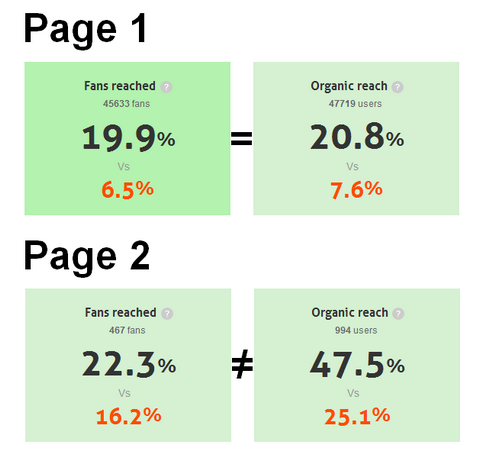
If this is the case, you're not sending enough traffic to your page from outside sources.
Use a Like box or another call to action to put your Facebook page and its content in front of people who read your newsletter or visit your blog or website.

As more people are referred to your page from outside of Facebook, your Organic Reach rises farther above your Fans Reached metric.
Takeaway: If your Organic Reach metric is only slightly higher than your Fans Reached metric, work on sending more traffic to your Facebook page.
#3: Raise Your Engagement Levels
Engaged users (or consumers, as Facebook calls them) are the people who click on your content to view a photo or play a video. They are also clicks that lead to a like, comment or share. These types of clicks turn your engaged users into “storytellers.” The People Talking About metric is referred to as storytellers.
Storytellers are a subset of engaged users, which means that you'll always have fewer storytellers than engaged users. On average, 20% to 35% of engaged users are storytellers.
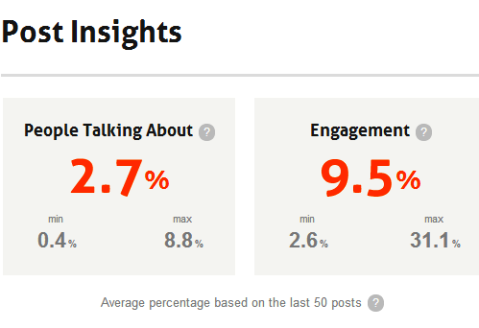
If your percentage of storytellers is below this average, you're good at getting people to notice your content, but not good at making them react to it with a like, share or comment.
To generate more engagement reactions, tweak your content to ask questions, publish content worth sharing and compel your fans to like it! Next, do an audit to spot existing content that's doing well and create similar posts in the future.
As the average number of storytellers per post rises, so does your viral exposure. If you do an excellent job, the number of storytellers could even be nearly as high as the number of engaged users.

Discover Proven Marketing Strategies and Tips
Want to go even deeper with your marketing? Check out the Social Media Marketing Podcast! Publishing weekly since 2012, the Social Media Marketing Podcast helps you navigate the constantly changing marketing jungle, with expert interviews from marketing pros.
But don’t let the name fool you. This show is about a lot more than just social media marketing. With over 600 episodes and millions of downloads each year, this show has been a trusted source for marketers for well over a decade.
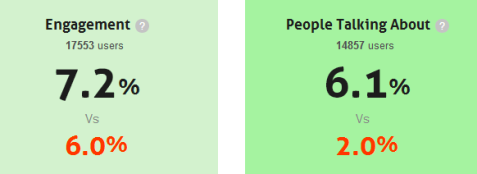
Takeaway: If your People Talking About metric is lower than the 20% average of your Engagement metric, tweak your content to encourage more reactions.
#4: Lower Your Negative Feedback Numbers
Negative feedback has a great impact on your EdgeRank and should be closely monitored. A page with good content but high negative feedback has a lower reach than a similar page with the same level of quality content but lower negative feedback.
Negative feedback doesn't necessarily mean that your content isn't good. It does mean that the number of people who don't want to see your posts is too high. This may be because you post too often, or because the “voice” of your brand makes some people feel uncomfortable.
For example, a charity that helps homeless people find a home had a very strong voice that shed light on poverty and the unfairness of certain situations. While the tone seemed to work well for a TV or print campaign, 0.4% of people didn't respond well to the stories in their news feed.
The percentage of negative feedback was 4 times higher than the accepted average and had a negative impact on the page's reach.
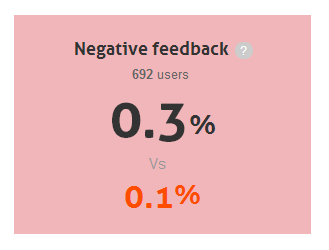
The page began to focus on the success stories the charity was able to contribute to, rather than the injustices it was fighting against. In less than a month, negative feedback fell back to normal, Organic Reach increased by 25% and viral reach increased by 80%.
If your average negative feedback is too high and your content isn't spammy, try changing your “voice” and test new content strategies.
Takeaway: If your negative feedback metric is higher than 0.1% of the people your page reaches, try a new content strategy.
#5: Increase Your Clicks
Occasionally, the number of engaged users doesn't seem to translate into clicks through to your content.
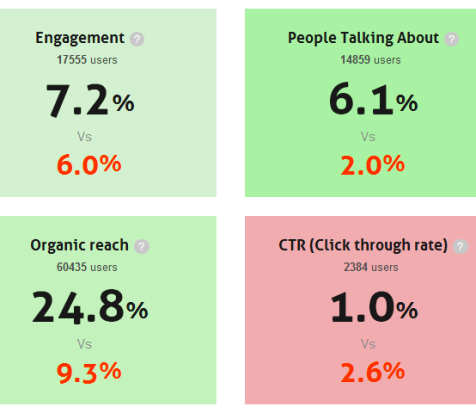
The issue relates to the value of your content and its ability to encourage users to click on that content. Remember that clicks are tracked only when users watch a video, enlarge a photo or click on a link in your post. Also, clicks are one of the actions EdgeRank looks at to rank the affinity between your page and your fans.

To encourage more clicks, publish more videos and images and don't forget to include links in the text used to describe your photos where appropriate. If you publish a lot of photos, the second step is to work on the quality of your photos so people want to see a larger version and not the small one that the news feed displays by default.

When users click more often to view your videos, images and content, you also get a higher EdgeRank score!
Takeaway: If your Click-Through Rate metric is much lower than your Engagement metric, remember to make your videos, photos or links worth clicking on.
#6: Extend Your Viral Reach
Viral Reach is the number of people you reach because your fans like, comment on and share your posts.
Unfortunately, viral metrics have been removed altogether from the new Facebook Page Insights since September 2013.
You can find Viral Reach metrics under the Key Metrics tab. It's labeled Lifetime Post Viral Reach.
If you want to have more visual graphs, you can also find Viral Reach metrics in third-party analytics tools, which still have access to that data via the Facebook API.

Improving your Viral Reach metric recruits new fans and increases your page visibility with people who don't know your brand. For some pages, Viral Reach is a greater indicator of visibility than Fan Reach.

Viral Reach is influenced by likes and comments, but most affected by shares. This is because EdgeRank doesn't show most likes and comments in the news feed, but it does display all the shares. For this reason, a share has much more weight than the other engagement actions.
If your Viral Reach is below average, you need to make sure your content is worth sharing. Here again, you need to audit your existing content and see which pieces triggered the most shares, and find out why.
For example, when you post numbers or use good-looking infographics, you'll get more shares than plain text or links. The reasons infographics motivate fans to share are too varied to provide one-size-fits-all advice. Test for what works and what doesn't and track this comparison often.
Takeaway: If your Viral Reach metric is significantly lower than your Fans Reached metric, you need to work on getting your content shared more often.
Your turn
Now that you understand how to compare key metrics to reveal weaknesses in your page, use them to apply some simple fixes and boost your page's performance.
What do you think? What metric comparisons do you find helpful? How have you boosted page performance in the past? Please share your thoughts in the comments below.
Attention Agency Owners, Brand Marketers, and Consultants

Introducing the Marketing Agency Show–our newest podcast designed to explore the struggles of agency marketers.
Join show host and agency owner, Brooke Sellas, as she interviews agency marketers and digs deep into their biggest challenges. Explore topics like navigating rough economic times, leveraging AI, service diversification, client acquisition, and much more.
Just pull up your favorite podcast app, search for Marketing Agency Show and start listening. Or click the button below for more information.

